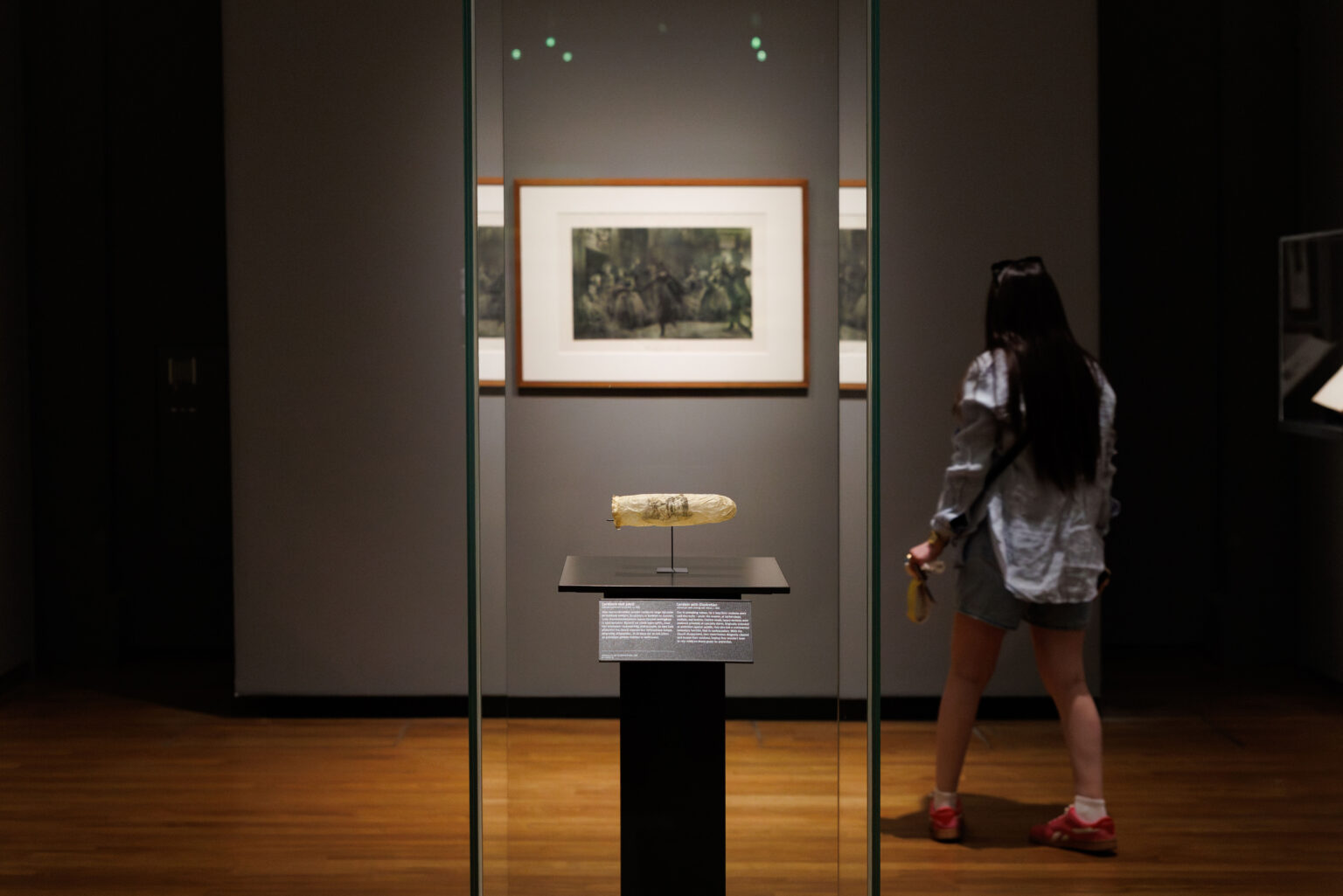Unveiling a 19th-Century Erotic Artifact at the Rijksmuseum
A Provocative Illustration from the Past
Imagine a scene so daring that it would challenge modern sensibilities: a nun boldly pointing her finger at three clergymen, who lift their robes to reveal their aroused states. Her legs are spread wide in a comically exaggerated pose, creating a bizarre yet humorous tableau. This provocative image, however, is just the beginning of its intriguing story.
An Unusual Contraceptive with a Bold Message
Nearly two centuries ago, this risqué illustration was printed on a condom, believed to have been circulated as a souvenir in brothels. Crafted most likely from a sheep’s appendix, this early form of contraception bears an inscription that reads “Voilà mon choix,” translating to “This is my choice.” This phrase serves as a satirical commentary on the concept of celibacy, highlighting the tension between societal expectations and personal desires during that era.
The Artifact’s Recent Exhibition and Significance
On Tuesday, the Rijksmuseum in Amsterdam unveiled this yellowed, crinkled relic, displaying it prominently among other 19th-century artifacts that explore themes of sexuality and prostitution. The print room, dedicated to historical drawings and photographs across various media, now features this extraordinary piece as part of its collection.
According to the museum, only two such objects are known to have survived to the present day, underscoring its rarity and historical importance. The display offers visitors a rare glimpse into the diverse ways printing was employed to explore and comment on human sexuality in the past.
Tracing the Origins of Contraceptive Devices
The history of condoms stretches back thousands of years, with some sources suggesting their use dates as far back as 3000 B.C. Ancient myths recount that King Minos of Crete used a goat’s bladder to protect his wife from diseases transmitted through semen, such as syphilis and other infections. Some stories imply that Minos himself wore the protective device, while others suggest it was used by his mistress, reflecting early attempts at disease prevention.
Historical evidence indicates that condoms made from animal intestines or similar materials have been in use since medieval times. In a lecture on the history of contraception, researcher Kate Stephenson noted that the earliest documented use involved linen cloth fashioned to fit over the penis, with references dating back to 1564 by an Italian anatomist. Similar methods appeared in medical texts from subsequent years, illustrating a long-standing human effort to control fertility and prevent disease.
The Cultural Context of 19th-Century Contraceptives
The 1830 condom on display in the Netherlands exemplifies the complex relationship between sexual pleasure and health concerns during that period. The museum describes it as embodying both the lighter and darker aspects of sexual health-an era when the pursuit of sensual gratification was often shadowed by fears of unwanted pregnancies and sexually transmitted infections, particularly syphilis.
Close-up images available on the museum’s website reveal the detailed, etching-like quality of the printed illustration, which also functions as a parody of the Greek myth of the Judgment of Paris. In this myth, the Trojan prince must decide which of three goddesses-Aphrodite, Athena, or Hera-is the fairest, a story that has been interpreted as a commentary on beauty and desire.
Acquisition and Display
The Rijksmuseum acquired this provocative artifact six months ago at an auction, reportedly without any competing bids, according to Artnet. It will remain on display until the end of November, offering visitors a unique opportunity to explore the intersection of art, sexuality, and social commentary from a bygone era.
Broader Reflections on Historical Sexuality and Contraception
This rare relic not only provides insight into the technological and cultural history of contraception but also highlights how societies have historically navigated issues of sexuality, morality, and health. From mythological origins to medieval innovations and 19th-century satirical prints, the evolution of contraceptive devices reflects humanity’s ongoing efforts to balance pleasure, safety, and societal norms.

